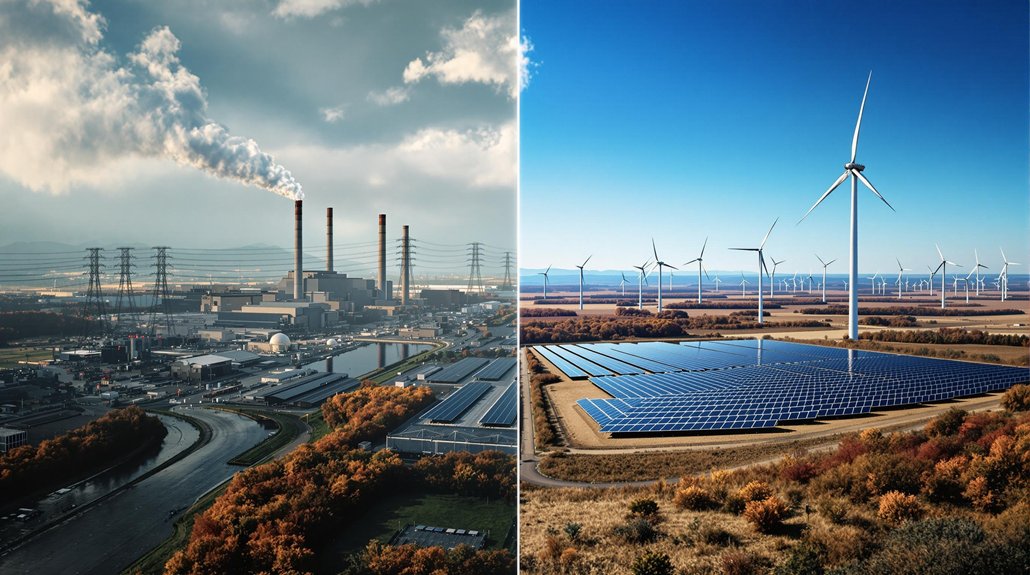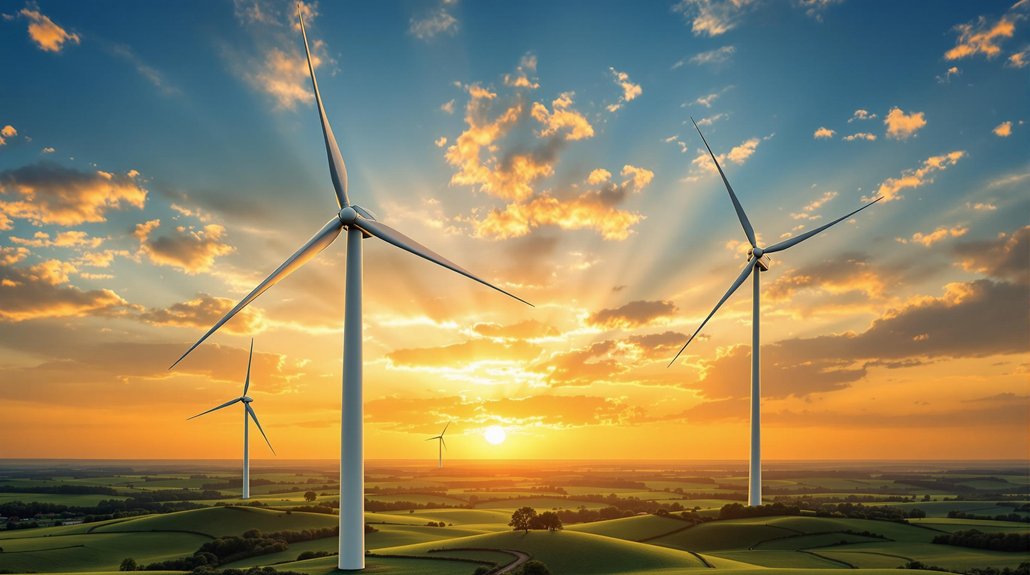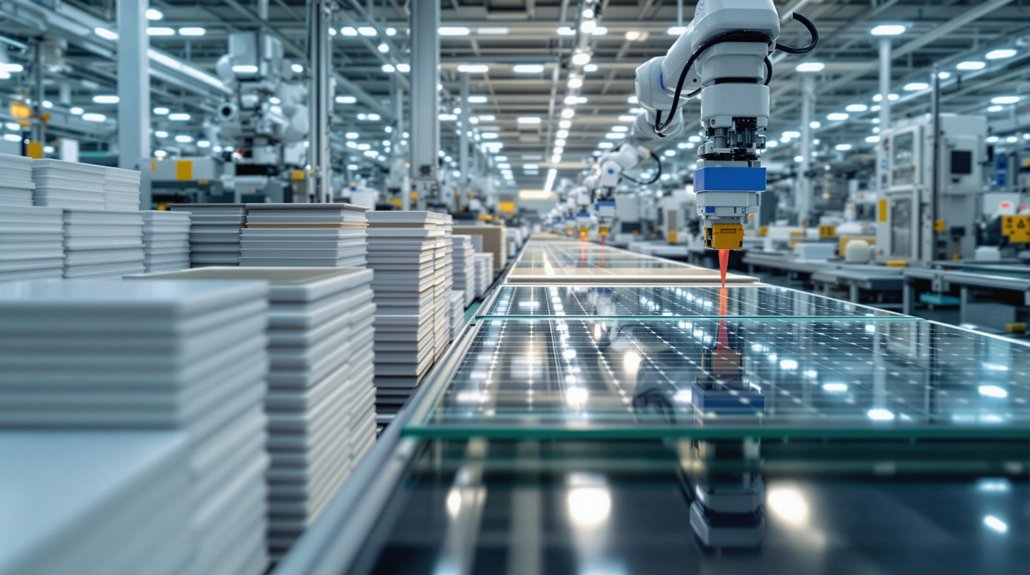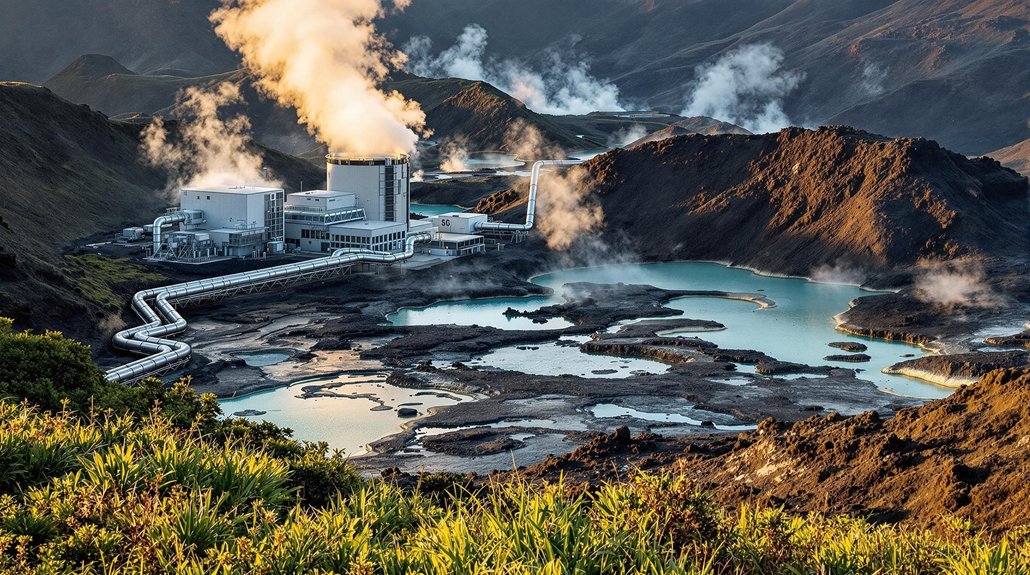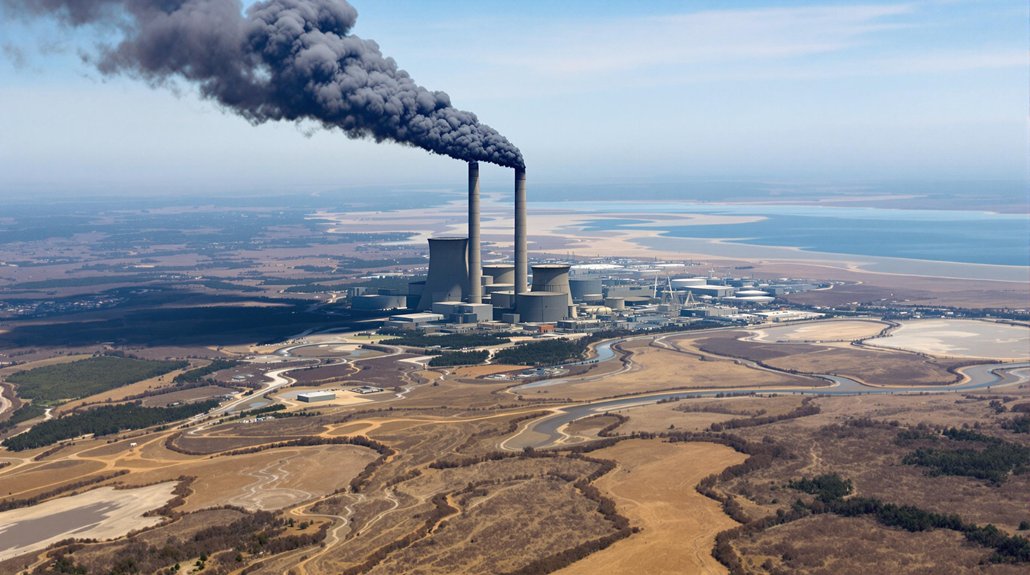The clean energy shift marks a global move from fossil fuels to renewables like solar and wind. This change faces significant hurdles, including power grid upgrades, intermittent generation, and job losses in traditional energy sectors. However, it offers substantial benefits: new employment opportunities, economic growth, and reduced healthcare costs from improved air quality. Government policies and technological innovations are supporting this change. The path forward balances immediate challenges against long-term environmental and economic gains.
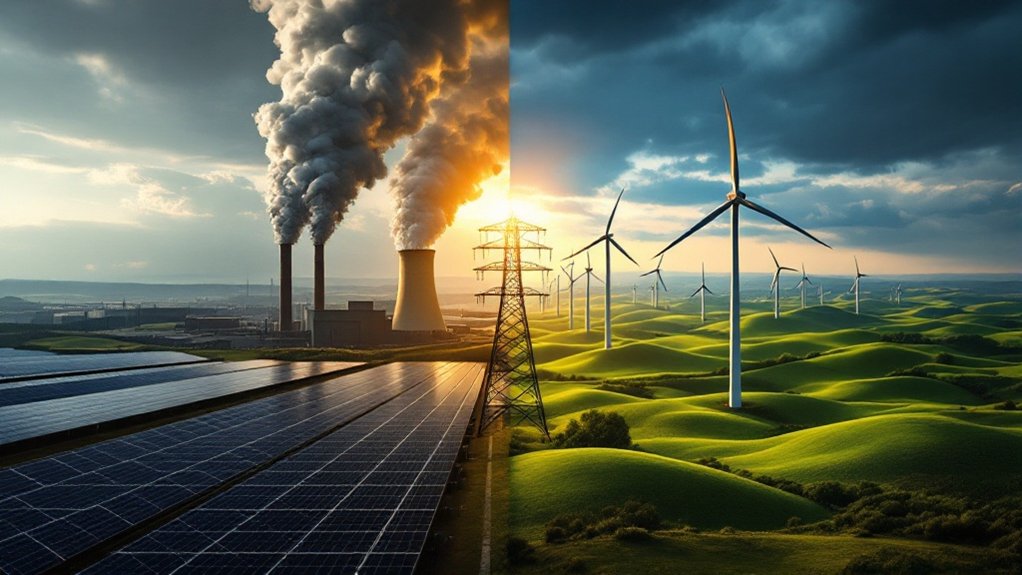
The world is quickly moving away from fossil fuels toward cleaner energy sources. This shift is happening as renewable energy investments now exceed those in fossil fuels. Solar power, electric vehicles, and efficient lighting are on track to meet global climate goals. Experts say 60-80% of electricity must come from wind and solar by 2035 to avoid the worst climate impacts.
Several factors are driving this change. Renewable energy costs have fallen dramatically. People are more aware of climate issues and demand sustainable options. Technology for storing energy and managing power grids has improved. Many companies have promised to use 100% renewable energy, while governments are setting climate targets. The sustainable energy transition is critical as fossil fuels currently account for approximately 75% of emissions globally. Recent surveys show that 68% of consumers are concerned about their carbon footprint and climate change impacts.
Despite progress, challenges remain. Power grids need major upgrades to handle renewable energy. Wind and solar power don’t generate electricity consistently. Countries worry about energy security during the conversion. Workers in coal, oil, and gas industries face job losses. New clean energy systems are expensive to build at first.
The economic picture shows both costs and benefits. Clean energy creates new jobs and could boost economic growth. Better air quality reduces healthcare costs. Preventing climate damage saves money on disaster recovery. New markets are opening for innovative technologies and services.
Policies worldwide are supporting the shift. The Paris Agreement guides national climate plans. More countries are putting a price on carbon pollution. Renewable energy targets are becoming more common. Governments are cutting fossil fuel subsidies and helping communities affected by the conversion. The transition encompasses five major renewable sources: solar, wind, hydropower systems, geothermal, and biomass energy.
Technology breakthroughs are accelerating change. Better batteries store energy for when the sun isn’t shining. Smart grids deliver power more efficiently. Green hydrogen production is scaling up. Newer solar panels and wind turbines capture more energy. Methods to capture carbon dioxide are improving.
Solving climate challenges requires teamwork. Public and private groups are partnering on clean energy projects. Countries share technology and funding. Communities are starting their own renewable energy projects. This collaboration is essential for a successful energy conversion.
Frequently Asked Questions
How Do Clean Energy Jobs Compare to Fossil Fuel Salaries?
Clean energy jobs generally pay well compared to fossil fuel work.
While coal, oil, and gas jobs paid $24.37 per hour on average in 2019, solar and wind jobs combined for a higher $24.85 median hourly wage.
Both sectors offer better wages than the national median of $19.14.
Some clean energy positions still pay 15-30% less than certain fossil fuel jobs, though clean energy employment is growing while fossil fuel jobs decline.
Can Developing Nations Afford to Transition to Renewable Energy?
Developing nations face significant barriers to renewable energy adoption. They need $1.7 trillion annually but receive less than 5% of global clean energy investments. Their borrowing costs are up to seven times higher than developed countries.
However, renewable energy is now cheaper than fossil fuels in 85% of the world. With international support, blended financing, and technology transfer, these countries can make the shift more affordable.
What Role Does Nuclear Energy Play in the Clean Transition?
Nuclear energy plays an essential role in the clean shift as a reliable, low-carbon power source.
It currently provides 10% of global electricity while preventing 1 Gt of CO2 emissions yearly. With zero direct emissions during operation and a small land footprint, nuclear complements variable renewables.
However, it faces challenges including high costs, public perception issues, and waste management concerns.
New technologies like small modular reactors offer promising solutions.
How Reliable Are Microgrids During Extreme Weather Events?
Microgrids show strong reliability during extreme weather events. They can operate independently when the main power grid fails.
During hurricanes, winter storms, and wildfires, microgrids have successfully powered critical facilities like hospitals and emergency services.
They’re not perfect – they cost a lot to build and have limited capacity compared to the main grid.
However, they’ve proven valuable for maintaining essential services during disasters.
Will Clean Energy Reduce Geopolitical Tensions Over Fossil Fuels?
Clean energy will likely reduce some geopolitical tensions over fossil fuels but create new ones.
Countries won’t fight over oil as much when they produce solar or wind power locally.
However, new conflicts may emerge over minerals needed for batteries and solar panels.
The shift period could be rocky, with fossil fuel producers facing economic challenges.
New partnerships and cooperation around renewable energy are already forming worldwide.
